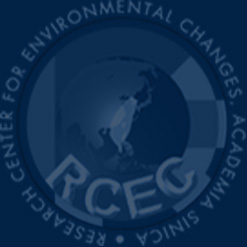

研究興趣
My research covers the dynamics and variability of regional climate anomalies and how they link to global climate system and climate change. Working in the College of Agriculture and Applied Science of USU, the research I undertook also covers extensive application aspects. Consequently, my research topics have included climate processes, predictability, and functionality. I have explored a number of high-impact extreme events through two approaches: diagnostics (understand why they happened) and attribution (quantify the role of climate change), with over 20 peer-reviewed papers on the subject matter. My extreme-climate studies include severe drought, downpour, major flooding, fire outbreaks, hurricanes and snowstorms. I spent years editing a monograph for the American Geophysical Union, titled Climate Extremes: Patterns and Mechanisms (ISBN: 1119067847). Published in 2017, this 400-page book contains 22 chapters written by frontline scientists around the world covering climate dynamics, variability, weather processes, and prediction challenges of arguably the most critical subject in climate change. The main thrust of my research concerns climate variability from weeks to decades, or (sub)seasonal-to-decadal (S2D), with 30+ papers published in this area. I also analyzed the climatology of tropical cyclones over the Indian Ocean, Pacific and Atlantic Oceans (>10 papers), studying their variation and interaction with the monsoon systems (25 papers). I worked closely with dendroclimatologists to develop tree-ring reconstructions of hydroclimate variations to help water resource management, with 10 papers in it. I also evaluated forecast models in capturing mesoscale convective systems and subseasonal variation in climate, and have been working on cross-scale predictability that connects weather and climate (>10 papers). As of mid-2020, I have published 135 refereed papers in the aforementioned research subjects.
代表著作
Chikamoto, Y., S.-Y. Wang, M. Yost, L. Yocom, and R. R. Gillies, (2020) Colorado River water supply is predictable on multi-year timescales owing to long-term ocean memory. (Nature) Communications Earth & Environment, DOI:10.1038/s43247-020-00027-0
Cheng, C.-P., H.-I Lin, S.-Y. Wang, P.-T. Liu, and K.-Y. Chao, (2020) Climate Services in Asia Pacific: Emerging Trends and Prospects. Bulletin of the American Meteorological Society, DOI:10.1175/BAMS-D-20-0093.1
Wang, S.-Y., H. Kim, D. Coumou, J.-H. Yoon, L. Zhao, and R. R. Gillies, 2019: Consecutive extreme flooding and heat wave in Japan: Are they becoming a norm? Atmospheric Science Letters, DOI:10.1002/asl.933.
Wang, S.-Y., L. Zhao, J.-H. Yoon, P. Klotzbach, and R. R. Gillies, 2018: Attribution of climate effects on Hurricane Harvey’s stalling characteristics and extreme precipitation in Texas, USA. Environmental Research Letters, DOI:10.1088/1748-9326/aabb85.
Wang, S.-Y., J.-H. Yoon, E. Becker, and R. R. Gillies, 2017: California from drought to deluge. Nature Climate Change, 7, 465-468.
Wang, S.-Y., Y.-H. Lin, M.-Y. Lee, J.-H. Yoon, J. D.D. Meyer, and P. J. Rasch, 2017: Accelerated increase in the Arctic tropospheric warming events surpassing stratospheric warming events during winter, Geophysical Research Letters, doi: 10.1002/2017GL073012.
Wang, S.-Y., L. Zhao, and R. R. Gillies, 2016: Synoptic and quantitative attribution of the extreme precipitation leading to the August 2016 Louisiana flood, Geophysical Research Letters, DOI: 10.1002/2016GL071460
重要研究與突破
California drought/flood vs. North American “winter dipole”The extremely abnormal winters of 2013–2015 in North America saw intense drought in the West and severe cold in the East. The circulation anomalies were characterized by a stationary-wave dipole: an amplified upper-level ridge in the western U.S. and a much deepened trough in the eastern-central U.S. With colleagues, I published a series of papers underlining a causal link of this circulation dipole with a type of El Niño precursor (explained next), one that has seen a strengthening in recent years. This mechanism lends support to how the amplified stationary-wave dipole enhanced the 2014-15 California drought and likewise intensified the 2016-17 California flood, one that damaged dams and infrastructure. I found that the alternation between wet and dry years in California prompted an increase in wildfires. I also proposed in a Nature Climate Change paper that the dramatic switch from extreme drought to severe flooding in California, and the accompanying flip from atmospheric ridge to trough in the northeastern Pacific, exemplifies the pathways to an intensified water cycle under a warming climate. These “pathways” conducive to extreme climate anomalies are being further developed into certain metrics that can be used for evaluating climate model experiments of the decadal prediction. My future research is focused on understanding the large-scale dynamics of the jet stream maintenance and the polar cap change, as well as their interaction with the tropical oceanic forcing sources. This future research will benefit from working with Dr. Hsu and Dr. Wu for their dynamic meteorology expertise and computing resources.
ENSO precursors and teleconnections I have worked on understanding the dynamics and evolution of the El Niño–Southern Oscillation (ENSO), a semi-periodic variation in winds and ocean temperatures over the tropical central/eastern Pacific Ocean. Strong ENSO events take more than a year to develop, sometimes longer, and how the “precursors” of ENSO form in the first place is of interest to me. In a 2012 publication, my colleague in the Climate Prediction Center (CPC) and I proposed a “western North Pacific (WNP)” mode of the ENSO precursor. The WNP is defined as an opposite signed sea surface temperature anomaly (SSTA) pattern located in the east of Taiwan and northeast of Papua New Guinea, which forms in the preceding winter of an El Nino/La Nina event. A later analysis published in Journal of Climate found that this WNP precursor has strengthened in the recent two decades, likely linked to the global warming. This WNP precursor was adopted by the CPC to forecast ENSO. In a 2015 Climate Dynamics paper, I further showed that the SSTA in the WNP region can propagate to tropical Eastern Pacific over 2-3 years and connect to ENSO events. In 2014, I co-chaired an AGU session on ENSO: Precursors and Expected Change (GC33B). Moreover, I have studied the ENSO teleconnection on regional climate extremes, and recent works of which include the intensified drought-deluge cycle in California and Texas. My current research attention is placed on the model diagnosis of different precursors’ effects on ENSO development, using what’s known as the partial ocean data assimilation and pacemaker approaches.
Monsoon systems and variability I published more than 20 papers about the variability and mechanism of the Asian and African monsoon systems. Some of these works overlap with my decadal oscillation research and some explored the topic of extremes. The change in Asian monsoon includes not only its magnitude but also the seasonality (life cycle). The Asian monsoon’s timing variation affects weather systems such as the tropical cyclone frequency and tropical cyclone tracks. I have collaborated with scientists across disciplines to explore monsoon extremes’ impact on humanity through historical and archeological analyses. Outside Asia, I also studied the African monsoon system including the Sahel rainband simulation, the interdecadal changes in African easterly waves and North Atlantic hurricanes, as well as interannual variation and teleconnection. These are inter-connected systems of interest. My current research on the monsoons is directed towards examining the climate change effect on the East Asian Summer Monsoon’s (EASM) distinct lifecycle, which consists of the active, break, and revival phases. The working hypothesis is that the warming climate intensifies all these phases and when they migrate northward, this amplified EASM lifecycle would create a sequence of flooding, heat wave, and strong typhoons. A similar event was observed recently in southern Japan during summer 2018, which I studied.
Aerosol effect on regional climate Anthropogenic aerosols affect regional climate greatly and also modulate extreme weather. The Indo-Gangetic Plains (IGP), with its staggering population density, has become a hotspot of rising anthropogenic aerosol emissions. Winter in the IGP features a very stable boundary layer, hence the potential for trapping aerosols comprised by finer particulate matter (PM) compared to summer. A 2017 study with my student was the first to examine long-term aerosol variability in the IGP and climate attribution, reporting that the winter aerosol and stability have a strong relationship at the lower troposphere. Since a more stable atmosphere traps more PM, stabilization induced by the greenhouse gas warming and aerosol feedback together can increase aerosols – even in the absence of changes in emission sources. The aerosol impact on regional climate is profound, as I also found that IGP aerosols can reduce winter precipitation in Nepal (i.e. contribution to drought), while winter aerosol lingering through spring can deepen the low pressure over the Bay of Bengal and subsequently intensifies tropical cyclones. In 2019, Cyclone Fani developed in the Bay of Bengal (BOB) killed 90 people in eastern India and Bangladesh while causing US$1.81 billion of damages. Fani developed during a period of high concentration of anthropogenic aerosols in the BOB with abnormally high sea surface temperature (SST), thereby presenting an opportunity to understand the compound effects of atmospheric aerosols and regional climate warming on a tropical cyclone. I have conducted a quantitative attribution analysis using WRF-Chem model to quantify the impact of aerosol effects. This approach, which was published in 2020, led to an ongoing research to attribute the effect of aerosol reduction due to COVID-19 on Super Cyclone Amphan. The hypothesis is that the reduced aerosols acted to strengthen the cyclone in the similarly warm SST compared to 2019. Attribution analysis like this is critical as it solves the complex interactions between anthropogenic warming and anthropogenic aerosol, which have overall opposite effects on a developing tropical cyclone.

1-435-757-3121
simon.wang@usu.edu